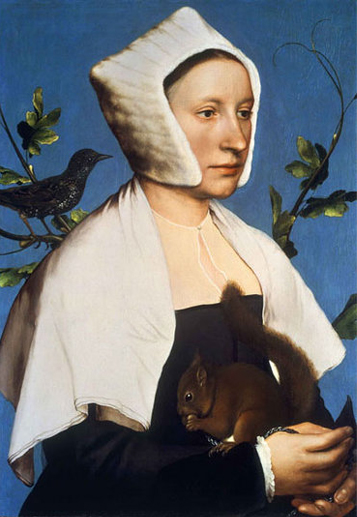THE lady in the white fur hat sat for her portrait in a quiet, well lit room somewhere in London one day in 1426 or 1427. There may have been little conversation between her and the artist. She was a lady of the court of Henry VIII and he, as a painter, would in those days have been regarded as a craftsman. He may have occasionally instructed her to move her head or hands, but the main sound in the room was probably that of his physical activity: the busy scratching of chalk on paper; the intermittent whisper of fingers rubbing the image to establish tone. She would have had plenty of time to wonder how the likeness would turn out.
The drawing Holbein made that day has not survived, although the painting for which it was the essen-tial preparatory work has. He added certain things: the blue background, on which he has inscribed a deli-cate, almost abstract tracery of vine leaves and tendrils; the squirrel that the sitter holds; the starling perched on a branch next to her. The squirrel and bird may once have held some significance, perhaps heraldic, but the information might not add much to the picture, whose strength lies in its dedication to a particular ideal of truthfulness. Holbein's portrait is not one of those paintings of a person that encourage you to admire the artist's inventiveness, his flattering transformation (as in the case, say, of a Van Dyck) of his subject. A young woman, neither particularly beautiful nor ugly, gazes away to her left. She seems withdrawn, a touch melancholic. The immediacy of the painting is, still, startling.
The woman's name is no longer known, so she has become A Lady with a Squirrel and a Starling. It is one of the ironies of...


